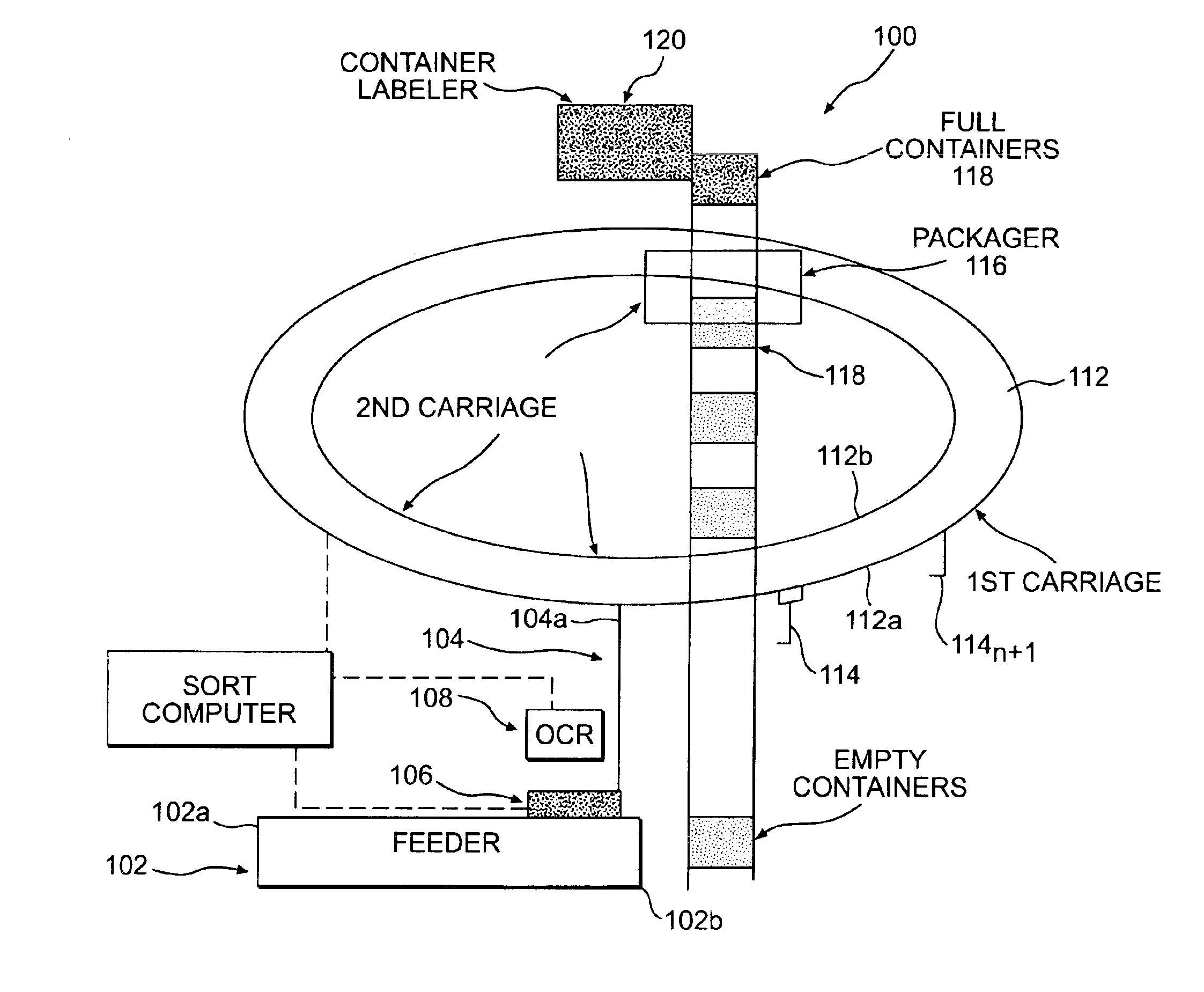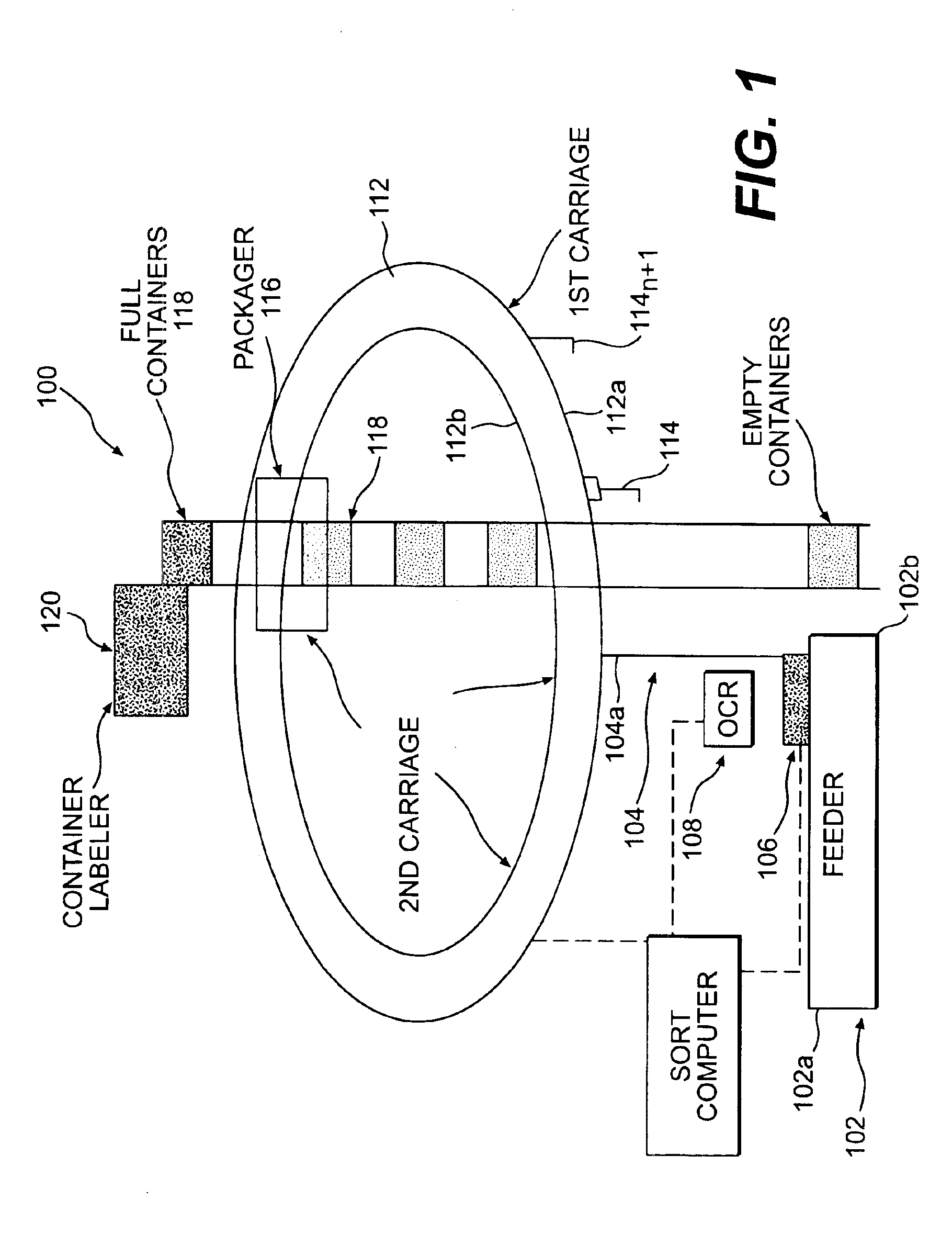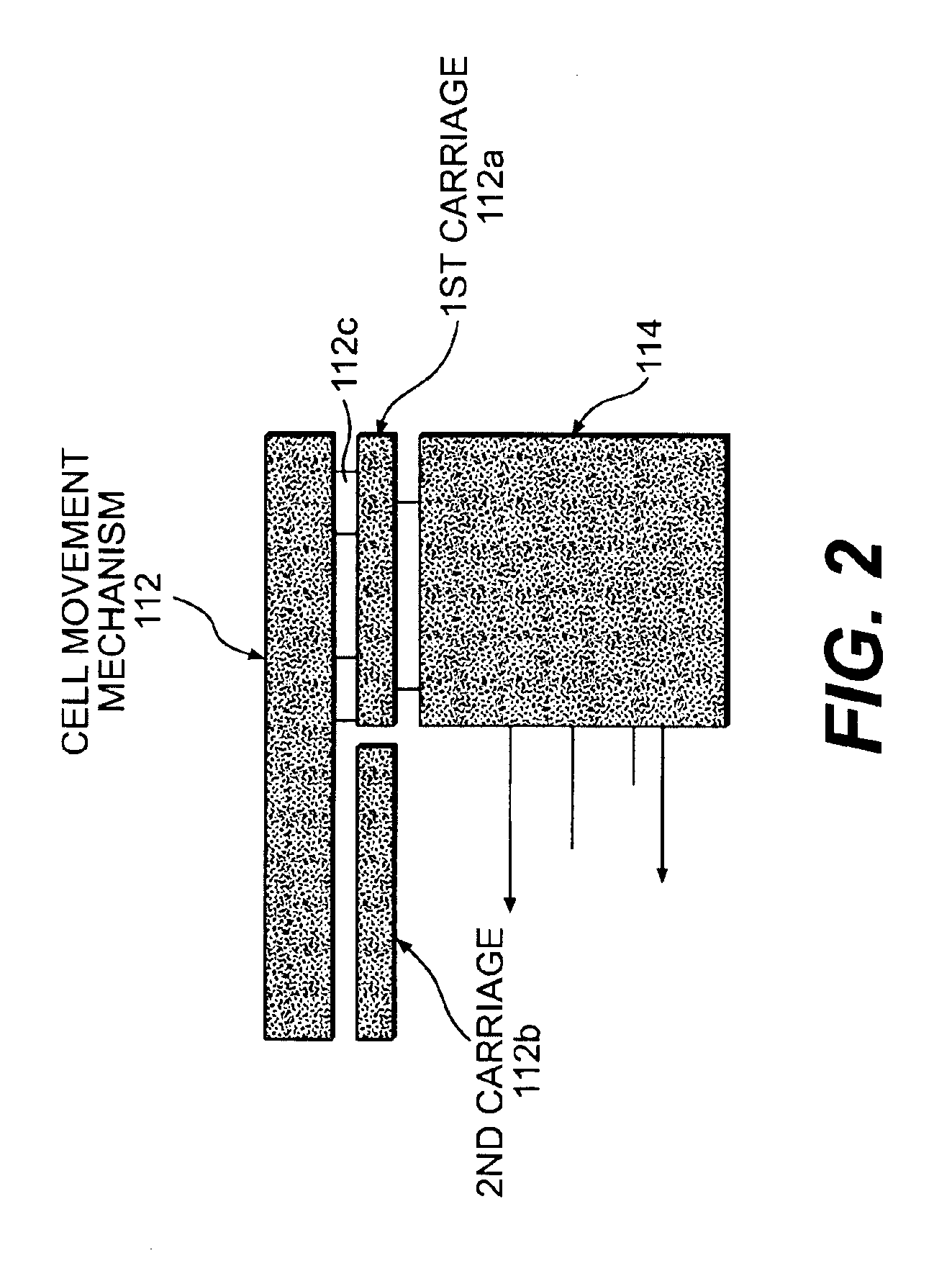Single pass sequencer
a single-pass sequencer and sequencer technology, applied in the field of single-pass sequencers, can solve the problems of increasing the damage to the mail pieces, affecting and increasing the labor intensity of the process, so as to achieve the reliability of the system approximately 70%, and the process is very labor-intensiv
- Summary
- Abstract
- Description
- Claims
- Application Information
AI Technical Summary
Benefits of technology
Problems solved by technology
Method used
Image
Examples
Embodiment Construction
[0024]The present invention provides a flexible system for sorting objects such as, for example, flats, mail pieces and other products or parts (generally referred to as flats or mail pieces). In the system of the present invention, only a single feed or pass is required through a feeder system to order and sequence the flats for future delivery. The system of the present invention may also be implemented in warehouse management systems. By way of example, the system of the present invention may sequence products or parts for assembly, distribution, (internally or externally) or storage.
[0025]The system of the present invention provides the flexibility of tracking the flats throughout the entire system while using many known off-the-shelf systems. This reduces manufacturing and delivery costs while still maintaining comparatively superior sorting and delivery results. The system of the present invention also minimizes damage to flats, provides a single drop point, as well as increas...
PUM
 Login to View More
Login to View More Abstract
Description
Claims
Application Information
 Login to View More
Login to View More - R&D
- Intellectual Property
- Life Sciences
- Materials
- Tech Scout
- Unparalleled Data Quality
- Higher Quality Content
- 60% Fewer Hallucinations
Browse by: Latest US Patents, China's latest patents, Technical Efficacy Thesaurus, Application Domain, Technology Topic, Popular Technical Reports.
© 2025 PatSnap. All rights reserved.Legal|Privacy policy|Modern Slavery Act Transparency Statement|Sitemap|About US| Contact US: help@patsnap.com



